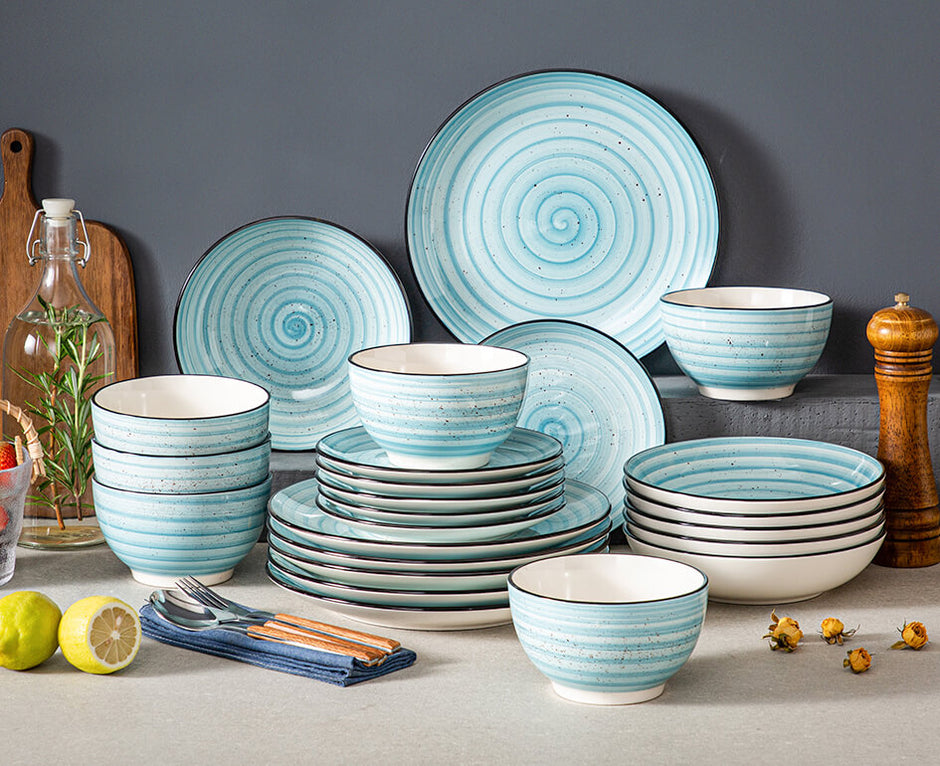Unlock the Secret to Choosing the Perfect Stoneware: What Every Buyer Needs to Know!
Stoneware dishes have become a staple in many kitchens, adored for their timeless appeal and versatility. Unlike other types of cookware, stoneware is known for its sturdy composition, making it perfect for both cooking and serving. As more people embrace home cooking and entertaining, the demand for quality stoneware has surged. However, with a plethora of options available, selecting the right stoneware dishes can be overwhelming. This article aims to guide you through the essential aspects of stoneware dishes, helping you compare different types and features, so you can make an informed purchasing decision.

Understanding Stoneware Dishes
Stoneware is a type of ceramic that is fired at a high temperature, resulting in a dense and durable material. This unique composition gives stoneware excellent heat retention and durability, making it a favorite among both home cooks and professional chefs. One of the primary benefits of using stoneware is its ability to maintain even heat distribution, which helps prevent hot spots during cooking. Additionally, stoneware is non-reactive, meaning it won’t alter the taste of your food. From baking casseroles to serving pasta, stoneware dishes excel in versatility, making them a valuable addition to any kitchen.
Key Features to Consider
When selecting stoneware dishes, there are several key features to take into account. Size is crucial; consider the portion sizes you typically prepare. Shape plays a significant role too—round dishes are ideal for casseroles, while rectangular ones are perfect for lasagna. Color and design can greatly influence the aesthetic appeal of your table setting; choose hues that complement your kitchen decor. Lastly, pay attention to the glaze quality. A smooth, high-quality glaze not only enhances the dish's appearance but also makes it easier to clean and less prone to staining. These features collectively impact both the functionality and aesthetic of your stoneware dishes.
Comparing Different Types of Stoneware
Stoneware comes in various forms, including bakeware, dinnerware, and serving dishes. Bakeware, such as pie plates and baking dishes, is designed to withstand high temperatures and is perfect for oven use. Dinnerware sets feature plates and bowls that are not only functional but also stylish for serving meals. Serving dishes, on the other hand, are typically larger and designed to present food beautifully at gatherings. Each type of stoneware has its advantages; for instance, bakeware is durable and ideal for oven cooking, while dinnerware offers an elegant way to showcase your culinary creations. However, the choice ultimately depends on your specific needs and cooking style.
Care and Maintenance of Stoneware
Proper care and maintenance of stoneware dishes are essential for their longevity. To clean stoneware, avoid using abrasive scrubbers, as they can scratch the surface. Instead, opt for a gentle sponge and mild detergent. Some stoneware requires seasoning before its first use, which involves applying a thin layer of oil to enhance its non-stick properties. It's important to avoid sudden temperature changes, such as placing a hot dish directly into cold water, as this can lead to cracking. By following these care tips, you can ensure that your stoneware remains in pristine condition for years to come.
Common Misconceptions About Stoneware
Despite its popularity, there are several misconceptions about stoneware that can deter potential buyers. One common myth is that stoneware is too heavy to handle. While it is true that stoneware can be heavier than other materials, this weight contributes to its durability and heat retention. Another misconception is that stoneware is prone to chipping; in reality, high-quality stoneware is designed to resist chips and cracks when properly cared for. Additionally, some people worry about the safety of using stoneware in the oven or microwave. Rest assured, well-made stoneware is safe for these uses, but always check the manufacturer's guidelines. Clearing up these myths can help buyers approach their purchase with confidence.
Making Informed Choices for Your Kitchen
In conclusion, choosing the right stoneware dishes involves understanding their properties, features, and types available. From bakeware to dinnerware, each style offers unique benefits that cater to different culinary needs. By considering key factors such as size, shape, and maintenance, you can make a well-informed decision that aligns with your cooking habits. As you navigate the world of stoneware, remember to consider your personal preferences and cooking style, ensuring that your selection enhances both your kitchen experience and table presentations.







